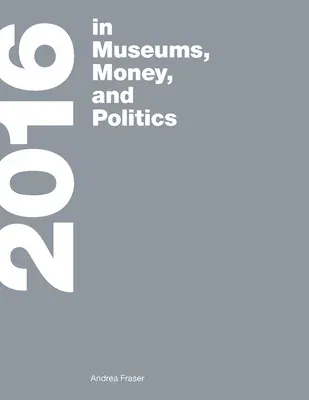Both institutional critique and reference work, documenting the
intersection of politics (in the form of political donations) and art
museums.
2016 in Museums, Money, and Politics examines the intersection
of electoral politics and private-nonprofit art institutions in the
United States at a pivotal historical moment. In a massive volume that
is both institutional critique and reference work, the artist Andrea
Fraser documents the reported political contributions made by trustees
of more than 125 art museums, representing every state in the nation, in
the 2016 election cycle. With campaigning that featured attacks on
vulnerable populations, the vilification of the media and "cultural
elites," and calls to curtail civil rights and liberties, the 2016
election cycle and its aftermath transformed national politics. It was
also the most expensive election in American history, with over $6.4
billion raised for presidential and congressional races combined. More
than half of this money came from just a few hundred people--many of
whom also support cultural institutions and serve on their boards.
2016 is organized like a telephone book. Contribution data is laid
out alphabetically by name of donor. With this and other data filling
more than 900 pages, the book offers a material representation of scale
of the interface between cultural philanthropy and campaign finance in
America. It also provides an unparalleled resource for exploring the
politics of the museum world. 2016 includes an afterword by Jamie
Stevens, the former curator and head of programs at CCA Wattis Institute
for Contemporary Arts in San Francisco, who traces the book's
development; an introduction by Andrea Fraser elaborating on the links
connecting cultural philanthropy, campaign finance, and plutocracy; a
section on each museum represented; and a section including data
summaries and additional data. The book presents a powerful argument
that supporting the arts must involve more than giving donations to
museums; it must also include defending the values, social structures,
and political institutions of an open, tolerant, just, and equitable
society.
Copublished by Westreich Wagner Publications, the CCA Wattis Institute
for Contemporary Arts, and the MIT Press

